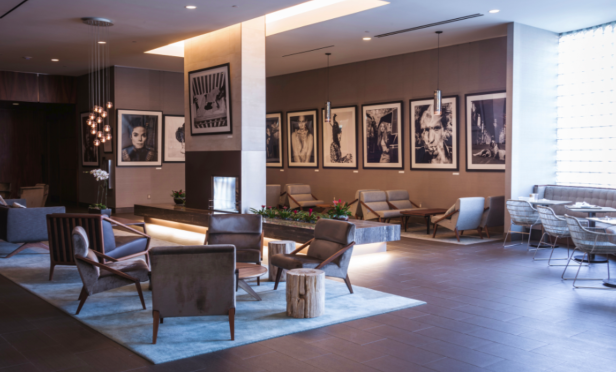As part of the trend to create an experience, developers at commercial properties are incorporating artwork and local art galleries. Art can have a significant impact on occupancy and can help to drive a connection between the property and local residents. Companies like Morrison Hotel Gallery are working with commercial owners to incorporate the right art pieces into both commercial and residential assets, and they have seen an increase in demand for artwork.
“The expression 'the eye of the beholder' is always at play in the art world. We gain awareness of things through our senses,” Peter Blachley, co-founder of Morrison Hotel Gallery, tells GlobeSt.com. “Commercial property designers and owners look for art that has a connection to the people who pass through or work or reside in the facility. We are unique at Morrison Hotel Gallery because our photography based on authentic music artists elicits an emotional reaction because the viewer has interacted with the music so well known that it can spark a memory or feeling of a time and place.”
Art serves multiple functions. It can help to drive design aesthetic or help create an experience or a feeling at a property. “I believe art is used for many different purposes. It can be as simple as choosing the right color palette to go with the surrounding furnishings or as complex as an avant-garde piece by a new contemporary artist,” says Blachley. “Our clients have chosen our fine art music photography because we represent the worlds best music photographers. Additionally, each print is authentic, iconic and makes people smile and feel good.”
The right artwork for a property is subjective, but depends largely on the use and location of the property. “Art in commercial properties is very subjective. Meaning, it needs to fit a particular design idea and audience who will use the property,” says Blachley. “If the location is in a city's historical district known for musical events or history than a musical palette would be preferred.”
Still, artwork is certainly an additional investment. To select the right piece, Blachley works directly with property owners to understand the property and the customer's needs. “We prefer to work in conjunction with the client to understand their specific needs and what they want to communicate with their ideas,” he says. “The first thing we look at is the proposed space requirements. In most cases we can scale the photography to fit the spaces. We look at how people interact with the space. Is it a large lobby, office space, conference room or atrium area or lower ceilings and hallways? We consider the best ways to utilize these areas. Once we and the client have chosen the art we can then have the prints matted and framed using high museum quality materials, which will protect the prints. We have non-reflective options for the glass or plexiglass used. We can safely transport the prints and install as well.”
© Touchpoint Markets, All Rights Reserved. Request academic re-use from www.copyright.com. All other uses, submit a request to [email protected]. For more inforrmation visit Asset & Logo Licensing.







